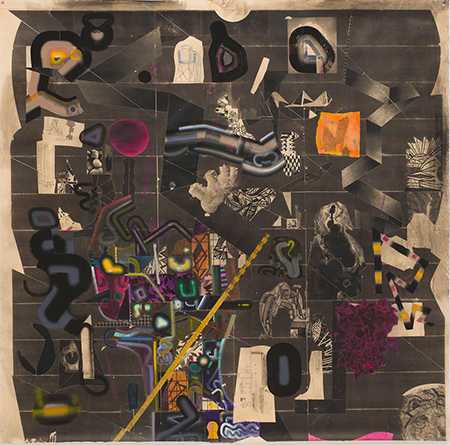
Continuing through August 31, 2016
When I was in college in the heady late 60s, just as the modernist art canon was coming under fire, a fellow art history student asked the professor how to define “quality" in art. The response, after a moment’s hesitation, was “Variety within unity.” The paintings of Seattle artist Robert Hardgrave perfectly fit that criterion and deepen it with its feeling of departure and return. Hardgrave changes material frequently in order to challenge himself and spur his creativity: “I want materials to guide the work toward what it is going to be, while maintaining a consistent language across media.”
If Hardgrave’s explorations of collage and painting take their modus operandi from Synthetic Cubism, they add the contemporary-materials touch of “acrylic toner transfer printing,” which I interpret as a marriage of digital imagery and acrylic gel, The fifteen paintings on panel and paper included here are abstractions with stylized figurative elements — personnages that play nicely with the contemporary sensibility as well as the art historian’s desire for context. This work could comfortably cohabit walls with Klee, Dubuffet and Picasso. The backgrounds of the paintings are black (though not a uniform blanket of paint), against which the brightly colored figures stand out in contrast, like butterflies flitting through sunbeams. “Mizzenmast,” with its doily-patterned standing and seated figures; “Ceylon,” with its Goya-like giant; “Jamon,” with its caricatured couple; and “Shrine of the Battlecry,” with its sword-wielding warriors and jazzy composition (Stuart Davis meets Paolo Uccello), confirm Ben Shahn’s judgment about art ancestors: they’re not your enemies; they can be helpful, whispering friends.
